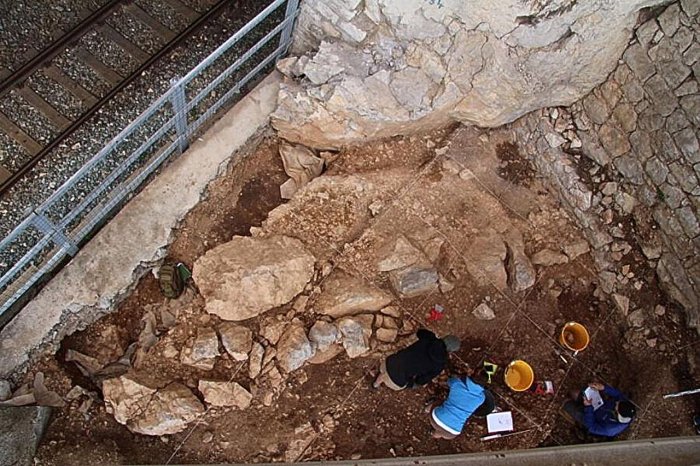Similarities And Differences Between Living Spaces Of Neanderthals And Homo Sapiens

Jan Bartek – AncientPages.com – It is becoming increasingly clear that Neanderthals and Homo Sapiens shared a lot more similarities than we initially thought.
A recent study has unveiled that Neanderthals, contrary to the common perception of being more primitive, exhibited behaviors similar to their Homo sapiens successors. They organized their living spaces similarly, for example.
Credit: Adobe Stock – Gorodenkoff
A team of archaeologists from the Université de Montréal and the University of Genoa have conducted an in-depth analysis of artifacts and features found at the Protoaurignacian and Mousterian levels of the Riparo Bombrini site, located in northwestern Italy. Their research led to the discovery of shared settlement patterns between two ancient populations.
The researchers utilized a comprehensive approach, mapping stone tools, animal bones, ochre, and marine shells across the site. This allowed them to create detailed models that accurately depict spatial patterns within this archaeological site. By identifying distinct clusters of artifacts and materials, they could infer meaningful insights about behaviors exhibited by different groups who once inhabited or used this location for various activities.
“This homogeneity in spatial distribution hinted at an underlying structure in how these ancient humans utilized the space,” said Amélie Vallerand, the UdeM doctoral student who led the study, co-authored by UdeM’s Julien Riel-Salvatore and UGenoa’s Fabio Negrino.
“By tallying the number of contiguous units of the same type of clusters, we could discern patterns to help us identify the activities carried out by these groups,” said Vallerand. “Applying quantitative and statistical methods allowed us to significantly reduce bias, and to provide compelling evidence that goes beyond qualitative descriptions of the spatial organization.”
By integrating spatial analyses with investigations of lithic technology, faunal remains, and marine shells, the researchers successfully constructed a holistic understanding of the behavioral parallels and disparities among these ancient populations.
Similarities between the living spaces of Neanderthals and Homo sapiens
Scientists have discovered that both Neanderthals and Homo sapiens demonstrated a structured approach to utilizing space, arranging their living spaces into separate zones for high and low-intensity activities. This indicates a common cognitive ability for spatial organization between the two species.
The occupational patterns for both groups have been developed over thousands of years of repeated habitation. The consistent location of the site’s inner hearths and a refuse pit, maintained across various levels, underscores the enduring nature of the layout.
Strategies related to land use and mobility influenced the structuring of all three levels. These strategies revolve around variations in the duration of occupation, intervals between reoccupations, number of occupants, and types of activities conducted. Therefore, planning and organization played a crucial role.
Differences between the living spaces of Neanderthals and Homo sapiens
The pattern of Neanderthal occupations was observed to be less intense compared to that of Homo sapiens. This is evidenced by the lower density of artifacts found in their deposits and fewer identifiable clusters.
This new study underscores the significance of directly comparing the spatial behavior of Neanderthals and ”Homo sapiens” within the same site, using consistent parameters, to minimize analytical bias. Credit: University of Montreal
Each level exhibits unique patterns of distribution and space utilization. Neanderthals used Riparo Bombrini intermittently, integrating it into a high mobility system to adapt to swift climatic changes. Conversely, Homo sapiens alternated between short-term and long-term base camps as a strategy for adjusting to their new territory.
The shift from Neanderthals to Homo sapiens in Liguria was marked by a swift change from the Late Mousterian (Neanderthal) to the Protoaurignacian (Homo sapiens) techno-complex, with no recorded interactions between the two species. This recent research emphasizes the importance of conducting direct comparisons of Neanderthals and Homo sapiens’ spatial behavior within identical locations, utilizing uniform parameters, in order to reduce potential analytical bias.
According to the research team, there is an underlying logic to how the space was used regardless of which species was present at the time.
“Like Homo sapiens, Neanderthals organized their living space in a structured way, according to the different tasks that took place there and to their needs. So this is yet another study indicating that Neanderthals were more ‘human’ than is generally assumed,” Vallerand said.
The study was published in the Journal of Archaeological Method and Theory
Written by Jan Bartek – AncientPages.com Staff Writer






